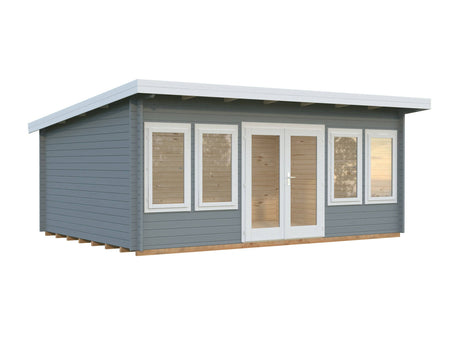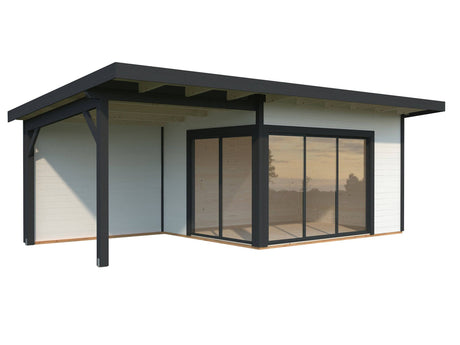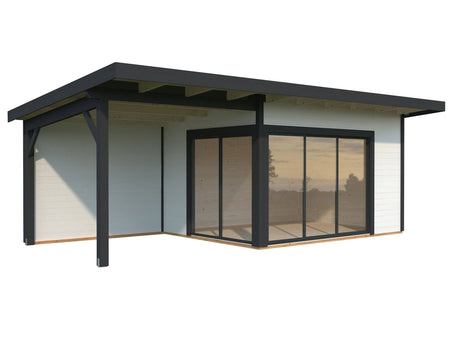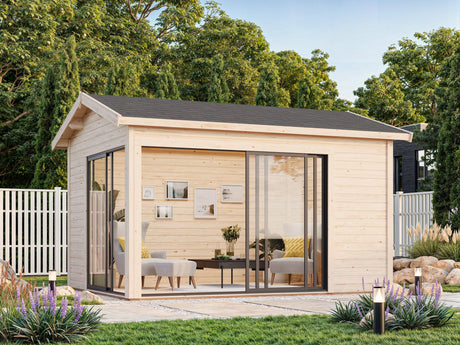6 Tips for Transforming Your Small Space into a Spacious Haven
This month in our series on garden design ideas for different shapes of gardens, we’re tackling an all-too-common horticultural gripe; how to come up with a unique small square garden design. If you live in an urban or suburban area, it’s quite likely your garden is a little square-ish shape – not exactly the stuff of garden design fantasies.
But don’t be defeatist – with the right tricks, your handkerchief of a backyard can be transformed into a far less square, more spacious-looking area. To help you do this, here are 6 tips to create an inspiring and roomy square garden design with your box-like plot.
Curved lawns complement a square garden design

Let’s face it – a square garden with a square lawn isn’t particularly exciting. If you want to jazz things up, try changing your lawn shape – circular, oval, or curved irregular shapes will all distract the eye from the box shape, and make your garden appear more creative.
Curves and arcs also create more opportunity for interesting borders, raised beds, or small vegetable garden patches, or for foliage to break up the lawn. However, when using foliage to create visual interest, be wary of shrubs that are likely to grow too vigorously outwards – they will end up turning a compact square garden design into an even smaller one.
If you decide to use lawn shapes to break up the square, lawn edging is essential to keep the lines crisp and defined. Have a look at the different options for edging materials (from metal to bamboo to eco-materials) on the Primrose website.
Complement or contrast with borders and paving

Having borders, walkways, and lines in your garden can take away from its squareness and create more of a visual (as well as physical) journey around the garden.
This approach can also help you create different sections, for example, a sinuous path to a relaxing or dining area can transform the look of the garden, and also the way you use it.
Wooden boardwalks are inexpensive but if you’re after a more robust alternative, stone bordering and edging are more versatile in terms of shape. And if you decide on a border for your new square garden design, there’s an inspiring ‘cheat’s guide’ to starting a border detailed in this article on the Guardian website, including the very tempting Garden on a Roll that does virtually everything for you except dig the bed.
To further enhance your borders and pathways, consider incorporating outdoor lighting. Strategic lighting enhances key features, adds depth, and creates a cozy ambiance, making your garden inviting day and night.
Add height, steps, or levels to break up your square garden

Introducing differing vertical aspects to your garden will help spruce up its appearance and profile as well as create more interesting features.
You can combine this approach with the ‘journey’ tip above by raising your walkways or perhaps giving your decking some height, perfect for an al fresco dining section. Even a larger structure like a pergola or arch can do the job, as can raised garden beds around a central lawn.
A more natural approach is also effective – a row of small trees or tall plants like delphiniums contrasted with low plants can create interest and intrigue. There are some good ideas for tall border plants on the Thompson & Morgan site.
For a modern garden, use sleek materials like metal, concrete, and composite wood for raised beds and pathways. Clean lines and geometric patterns add a contemporary touch while keeping it functional.
Use the walls or fence around your square garden to enhance it

In too many suburban and urban gardens, the walls or fences are bland or even ugly – they restrict your garden and act as boundaries, without actually adding any visual interest at all.
An excellent way to combat this can be to incorporate boundaries into the design. Planting climbing plants up trellises on a wall or fence will create a more natural and organic feel, and make the garden feel less confined, without eating up as much space as a border.
You could even hang flower baskets or display potted plants on a wall or fence, extending the planting space if your garden is tiny. For a good selection of wall planters have a look at the Woolly Pocket site.
Alternatively, try integrating raised flower beds with seating areas or a fountain into the fence or walls around the edge of your square-shaped garden design.
Sectioning; break your square garden into different zones

If you can take in everything in your garden at first glance, its squareness is going to be immediately obvious.
A great method to fix this is to compartmentalise your garden into different sections with different purposes. You can divide using borders, tall plants, or trellises.
A dining area either right next to the house (for convenience) or at the far end of the garden (for a more getting-away-from-things feel) could be useful, while a shady spot, kids’ play area, or small vegetable patch could be useful and easily accomplished.
There are some inspiring garden ideas for small gardens (though not all of them are square in shape) on the Ideal Home website.
Add a structure or garden building to disguise the square shape

Having a focal point to grab the attention will disguise the squareness of your garden – whether a pergola, gazebo, summer house, or garden office. Complementing these structures with garden furniture can further enhance the aesthetic appeal and create a more inviting outdoor space.
Bear in mind a non-square or non-rectangular shape will likely achieve this goal better, as well as use space more efficiently, so look at corner buildings and circular or hexagonal shapes.
Remember that, in most circumstances in the UK, a building within 2 metres of a boundary wall will require planning permission if it is over 2.5m high, so take this into consideration when choosing a structure.
Hopefully, these tips and inspirational ideas will help you generate some great ideas for your own square garden design.


























































